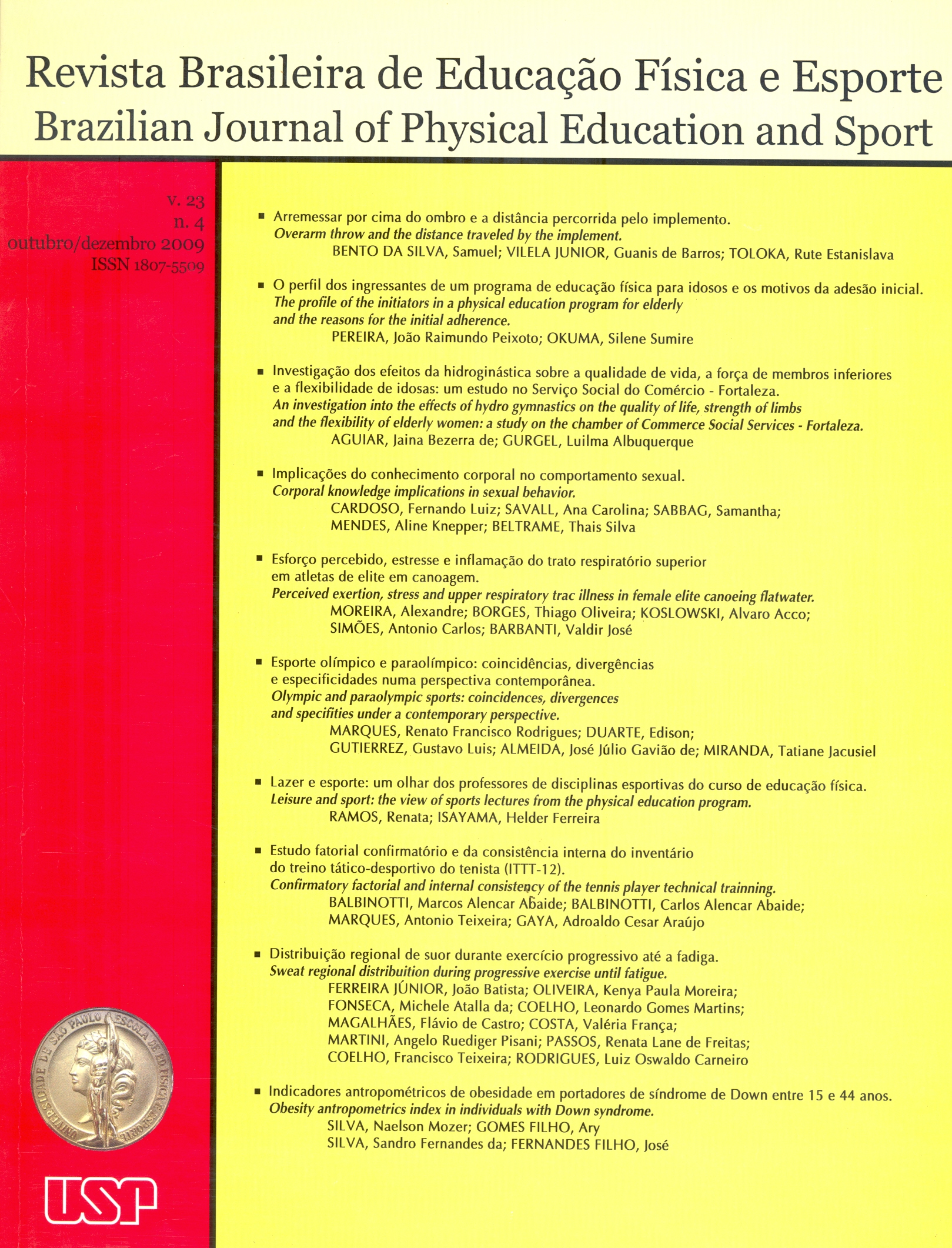Obesity antropometrics index in individuals with Down syndrome
DOI:
https://doi.org/10.1590/S1807-55092009000400010Keywords:
Overweight, Obesity, Body fat indicator, Down syndromeAbstract
The objective of this study was to determine the prevalence of overweight and obesity, the correlation between body mass index (BMI) and indices: waist hip ratio (WHR) and waist circumference (CC) and to compare between genders, the relationship between the indices in patients of Down syndrome (DS) aged 15 to 44 years. The sample consisted of 33 individuals of DS residents in the cities of Itaperuna - RJ and Bom Jesus Itabapoana - RJ, being 15 females aged between 14 and 38 years (mean ± SD, 23.8 ± 7.4 years, BMI = 29.67 ± 5.64 kg/m²) and 18 males aged between 14 and 44 years (mean ± SD, 26.4 ± 8.4 years, BMI = 27.68 ± 5.97 kg/m²). The anthropometric measures of body mass, height, waist and hip, were used to obtain the BMI, the WHR and WC. The level of association between variables was obtained by Spearman and Pearson tests. The highest correlation coefficients between the variables BMI and WC in male groups (r = 0.926, p = 0.000), female (r = 0.874, p = 0.000) and overall (r = 0.892, p = 0.000). Thus, the strongest associations between BMI and anthropometric indicators suggest that these CC integrated indicators are good predictors of general and central obesity, in patients with DS.Downloads
Download data is not yet available.
Downloads
Published
2009-12-01
Issue
Section
naodefinida
License
Todo o conteúdo da revista, exceto onde está identificado, está licenciado sob uma Licença Creative Commons (CC-BY)
How to Cite
Silva, N. M., Gomes Filho, A., Silva, S. F. da, & Fernandes Filho, J. (2009). Obesity antropometrics index in individuals with Down syndrome . Brazilian Journal of Physical Education and Sport, 23(4), 415-424. https://doi.org/10.1590/S1807-55092009000400010


